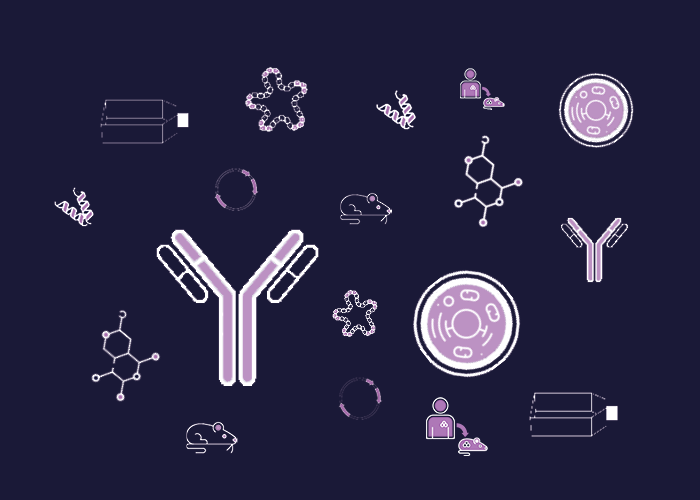Cat. #151014
MCF7 AREc32 Cell Line
Cat. #: 151014
Sub-type: Continuous
Unit size: 1x10^6 cells / vial
Availability: 8-10 weeks
Organism: Human
Tissue: Breast
Disease: Cancer
Model: Reporter
£800.00
This fee is applicable only for non-profit organisations. If you are a for-profit organisation or a researcher working on commercially-sponsored academic research, you will need to contact our licensing team for a commercial use license.
Contributor
Inventor: Roland Wolf
Institute: University of Dundee
Primary Citation: Wang et al. 2006. Cancer Res. 66(22):10983-94. PMID: 17108137
Tool Details
*FOR RESEARCH USE ONLY (for other uses, please contact the licensing team)
- Name: MCF7 AREc32 Cell Line
- Research fields: Cancer;Drug development
- Tool sub type: Continuous
- Parental cell: MCF7
- Organism: Human
- Tissue: Breast
- Disease: Cancer
- Model: Reporter
- Conditional: Yes
- Description: The stable human mammary MCF7 AREc32 reporter cell line contains copies of the rat GST antioxidant response element (ARE) linked to a luciferase reporter gene, such that the induction of the ARE results in luciferase activity. ARE is a transcriptional cis-regulatory element involved in the activation of genes coding for a number of antioxidant proteins and enzymes that work in concert to protect tissues from oxidative insults. This cell line can be used to evaluate how potential anti-cancer agents modulate ARE-mediated antioxidant pathways and identify antioxidant proteins that may serve as potential therapeutic targets.
- Production details: The ARE-luciferase reporter plasmid was generated using the pGL3-promoter vector containing an SV40 promoter upstream of the firefly luciferase gene. They differ in the number of copies of ARE sequences that have been inserted, in head-to-tail orientation, through Nhe I & Xho I restrictionsites upstream of the promoter-luc+ transcriptional unit. A plasmid was made containing eight copies of the ARE (5'-GTGACAAAGCA-3', with the minimal functional sequence underlined) present in both rat GSTA2 and mouse gsta1; called pGL-8xARE. A linker with the sequence of 5'-CCC-3' and 5'-GGG-3' on the opposite strand was placed between individual cis-elements.pGL-8xARE, was stably transfected into MCF7 cells using the calcium phosphate method. Transfected cells were selected using 0.8 mg/mL G418 in the media for 3 to 4 weeks. The G418-resistant clones were isolated and screened by measuring their basal and inducible (obtained by treatment with 50 Amol/L t-BHQ) luciferase activities as described above. Positive clones, which showed low background and high inducible luciferase activity, were passaged and maintained in growth medium containing 0.8 mg/mL G418.
- Biosafety level: 1
- Recommended controls: MCF7 parental line
- Cellosaurus id: CVCL_1D32
Target Details
- Target: Antioxidant Response Element (ARE)- Luciferase
Handling
- Format: Frozen
- Growth medium: DMEM with 2.5 mM Glutamax supplemented with 10% fetal bovine serum and antibiotics. Do not culture beyond 15 passages after revival.
- Unit size: 1x10^6 cells / vial
- Shipping conditions: Dry ice
- Storage conditions: Liquid Nitrogen
- Subculture routine: Split sub-confluent cultures (70-80%) 1:3 to 1:6 i.e. seeding at 2-4 x 10^4 cells/cm² using 0.05% trypsin/EDTA solution. Cells are cultured at 37°C, in 95% air and 5% CO₂, and passaged every 3 to 4 days.
- Mycoplasma free: Yes
References
- Gameiro et al. 2017. Sci Rep. 7:45701. PMID: 28361919
- MacLeod et al. 2016. Br J Cancer. :. PMID: 27824809
- Basar et al. 2016. Phytochem Anal. 27(5):233-8. PMID: 27527356
- Bräunig et al. 2016. Chemosphere. 156:181-90. PMID: 27176940
- Brack et al. 2016. Sci Total Environ. 544:1073-118. PMID: 26779957
- Rücker et al. 2015. Org Biomol Chem. 13(10):3040-7. PMID: 25622264
- Buendia et al. 2015. Future Med Chem. 7(15):1961-9. PMID: 26496465
- Escher et al. 2012. J Environ Monit. 14(11):2877-85. PMID: 23032559
- Wang et al. 2007. Proc Natl Acad Sci U S A. 104(49):19589-94. PMID: 18048326
- Wang et al. 2006. Cancer Res. 66(22):10983-94. PMID: 17108137



